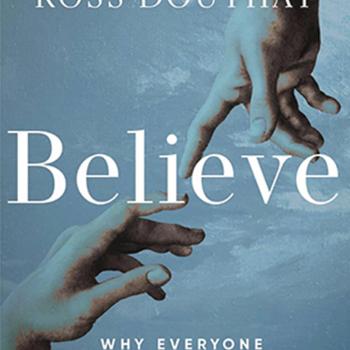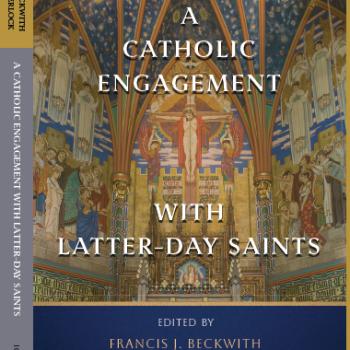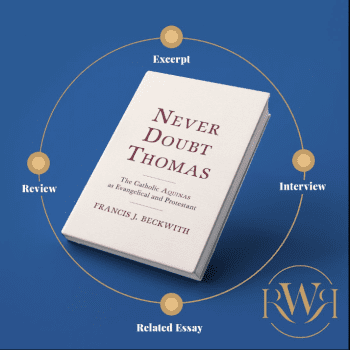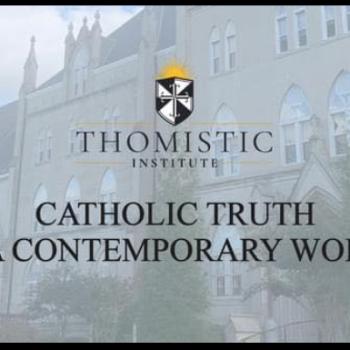Many readers of this blog have heard of the great Catholic literary scholar, Thomas Howard. He died less than two weeks ago at the age of 85. Born into a well-known Evangelical family, Howard was received into the Catholic Church in 1985. Over the past two weeks, many writers have praised Howard’s works and have noted their profound influence on their own journeys as well as the journeys of countless other Christians from a variety of traditions. Among these writers are David Mills and Kenneth Craycraft.
I remember when Howard became Catholic. It was a real earthquake in the Evangelical world. At the time I was studying for my PhD in philosophy at Fordham University, a Jesuit school in the Bronx. Because I had left the Catholic Church as a youngster and had gravitated to Evangelicalism, I was nevertheless intrigued by Howard’s conversion. However, because it seemed so strange to me, since I was convinced that Catholicism had gotten some things very wrong about Christ and the Church, I was not 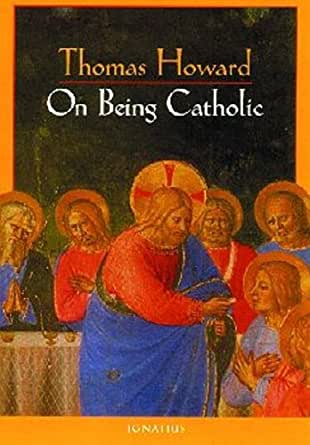 moved to investigate Howard’s reasons. I realize now that it was a mistake for me not to have taken his conversion more seriously. It was not until 2007 that I would follow Howard back into the Church.
moved to investigate Howard’s reasons. I realize now that it was a mistake for me not to have taken his conversion more seriously. It was not until 2007 that I would follow Howard back into the Church.
This morning, Howard’s nephew and my friend, David M. Howard, Jr., sent me an essay he composed in honor of his Uncle Tom. A Professor of Old Testament at Bethlehem College & Seminary, David graciously gave me permission publish his essay on my blog.
Thomas Howard: Evangelical Catholic
David M. Howard, Jr.
Thomas Howard, one of the most prominent “Evangelicals-turned-Catholic,” died on October 15 at age 85. He left lasting imprints both in Evangelical and Roman Catholic circles.
He was born into a prominent Evangelical family whose parents had been missionaries in Belgium in the early 1920’s before his father returned to the U.S. to take the editorship of the influential Sunday School Times, widely used every week in evangelical churches for more than a century. His father was a “Fundamentalist” in doctrine, but he was uncomfortable with “the somewhat tatterdemalion set of sensibilities that eventually came to accompany Fundamentalist piety”; he was more comfortable with a “moderate Philadelphia Presbyterianism,” as Tom put it. Tom was one of six children in his family; one was his sister Elisabeth Elliot, well-known Christian author and speaker. Another was my father, so he was “Uncle Tom” to me.
Tom was his father’s son in prizing “an exact daily routine [that] bespoke a well-ordered world.” His first book, the widely influential Christ the Tiger, opens with this: “One way of describing my childhood would be to say that it was a massive effort to get cozy.” Because of this quest to “get cozy,” we in the family were not surprised when he turned in the mid-1960’s to the well-ordered doctrines and worship of the Episcopal Church and especially when he later turned to “Rome” in 1985. For him, the beautiful aesthetics of the Mass, the “tidiness” of the teaching Magisterium of the Church—as opposed to the “messiness” of the many varieties of Protestantism—and much more, were all of a piece with his early desire to be “cozy.” His final book published as an Evangelical was Evangelical is Not Enough; upon completion, he would say he realized that he was now a Roman Catholic.
Tom had been well read in Evangelical circles for two decades, author of several books and writing regularly for Christianity Today (CT), the flagship journal of Evangelicalism. Though he was never as famous as his sister Elisabeth, his books were de rigueur among Evangelical intellectuals and opinion leaders. But, upon his conversion, he dropped off the Evangelical radar screen: he lost his job as a professor of English at Gordon College, and CT ran a 14-page spread consisting of a news story, an interview with Tom by a noted Evangelical church historian, and then an eviscerating analysis by that historian of Tom’s responses.
Happily for Tom, he landed well, teaching at St. John’s Seminary in Boston for the remainder of his academic career and becoming somewhat of a star in conservative Catholic redoubts. He became a regular on EWTN, the Catholic TV network. He and his wife Lovelace were the first interviewees on the network’s “The Journey Home,” a program dedicated to prominent converts to Catholicism. All of his books written as an Evangelical were reprinted by the conservative Catholic Ignatius Press, which also published his later books, including Lead, Kindly Light: My Journey to Rome and On Being Catholic. He was widely sought after as a speaker and teacher at Catholic institutions.
Tom influenced thousands of students in his classrooms and tens of thousands through his writings. He was mentor to many younger Evangelicals who made their way to Canterbury or to Rome. He loved people, great and small, and was a thoroughly warm, inviting, and gregarious host. He and Lovelace entertained countless gatherings in their home, where conversations abounded about literature, music, art, history, philosophy, theology, and culture (never politics or sports!), often into the wee hours of the morning.
Tom was a man of dignity, taste, and panache. Father Dwight Longenecker, another Evangelical convert, wrote recently on his blog that “He played the part to the full with his T.S. Eliot manners, his tweed suits, bow ties and witty repartee. He was an actor and raconteur and reveled in the joy of language.” Shakespearean utterances regularly rolled off his tongue, such as “Angels and ministers of grace defend us!” (from Hamlet) or “Once more unto the breech, dear friends” (from Henry V). People enjoyed his writings almost as much for their wit, extraordinary vocabulary, and unique expressions as for his trenchant analyses.
As fellow academics, Tom and I shared many years of good conversation, usually via email. He constantly urged me to read this or that papal encyclical, to see how “orthodox”—even “evangelical”—the Church was, but then he’d retract that and say “On second thought, don’t read it. You’ll become convinced, convert, and then you’ll lose your job at that Babdis’ school you’re teaching at!” I don’t agree with any of the Roman Catholic doctrines that differ from Protestantism; I remain an unapologetic Babdis’. But, I enjoyed the repartee and I do think that he was “on the side of the angels” in most of the important essentials of the faith, as he also used to say about me.
Tom’s priorities were God and Church first, family second, and his public work third. His family letters during his children’s growing-up years constantly extolled the delights of home and hearth, of “splendor in the ordinary” (title of his fourth book), of all the little things that make life “good.” He was a kind and generous man. In his later years, he volunteered as a greeter at a local hospital, where no one knew how “famous” he was. “Caritas” (“charity”) was a favorite word. As his daughter Gallaudet put it in a Facebook posting, “This lovely, funny, gallant, brilliant man greeted every creature he met, from the most distinguished of statesmen to the tiniest of toads hopping across his path, with the same bone-deep and courteous charity.”
A good and godly man. RIP.
© David M. Howard, Jr.



